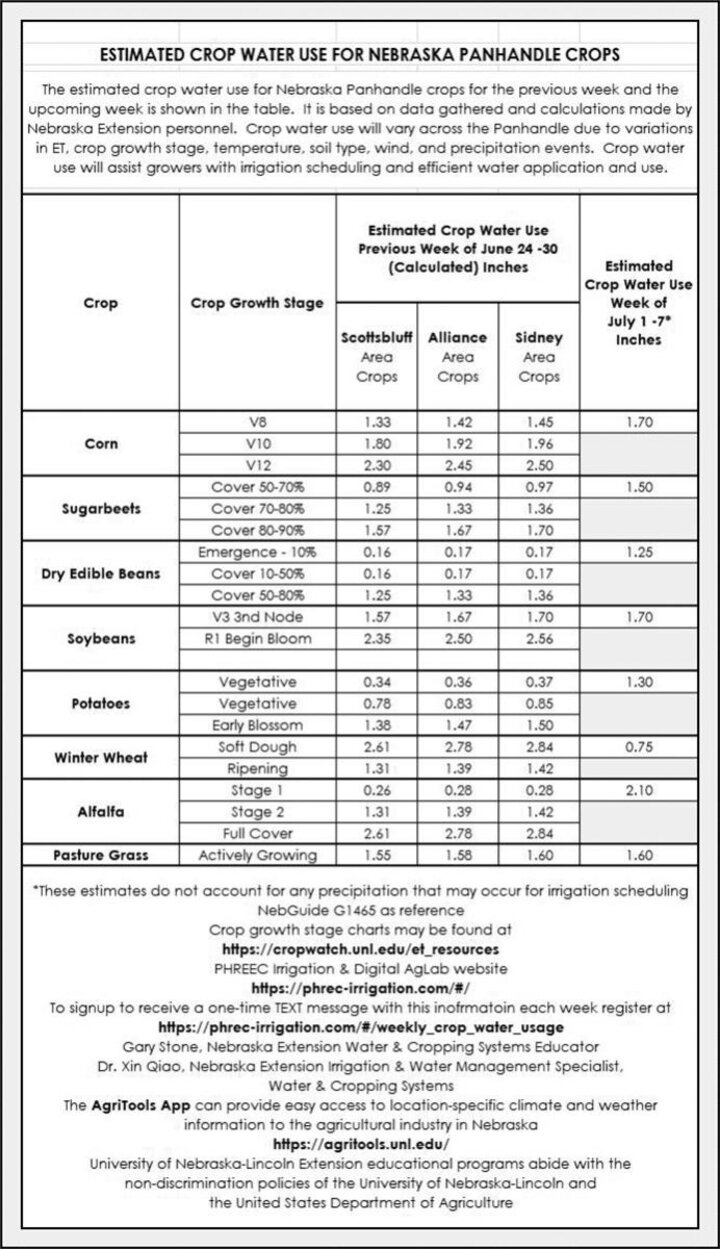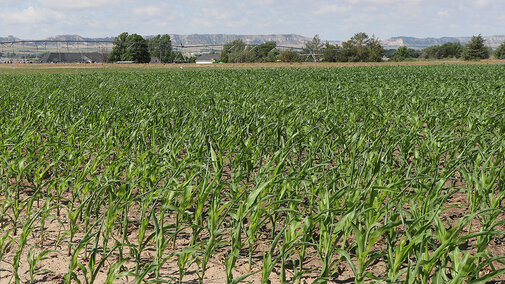The last week of June was hot. In Scottsbluff, the record of 102 degrees set in 2012 was broken when the temperatures soared to 104 degrees on June 24.
“The hot temperatures last week increased crop water use,” said Gary Stone, Nebraska Extension educator. “Cooler temperatures and chances of precipitation are forecasted for this week, with the higher temperatures returning next week.”
He added crops affected by the storm with the high winds and hail on June 20 are recovering well, and there were some dry bean fields that were replanted.
Irrigation water deliveries continue across the North Platte Valley, with the Pathfinder and Goshen/Gering-Fort Laramie irrigation districts delivering approximately 1,500 cfs each. Winter wheat harvest is drawing near, and millet and sunflowers are being planted in the dryland cropping areas of the Panhandle.
Assisting growers with monitoring their crop's water profile is the estimated crop water use for July 1-7.
The table information includes the estimated crop water use for Nebraska Panhandle crops for the previous week and the upcoming week. The table is based on data gathered and calculations made by Gary Stone, Nebraska Extension educator, and Dr. Xin Qiao, extension irrigation and water management specialist, both based at the UNL Panhandle Research and Extension Center in Scottsbluff, Nebraska.
Crop water use will vary across the Panhandle due to variations in ET, crop growth stage, temperature, soil type, wind and precipitation events. Crop water use will assist growers with irrigation scheduling and efficient water application and use.
Register online to receive a weekly text message with the table information.
The AgriTools App can provide easy access to location-specific climate and weather information to the agricultural industry in Nebraska.


